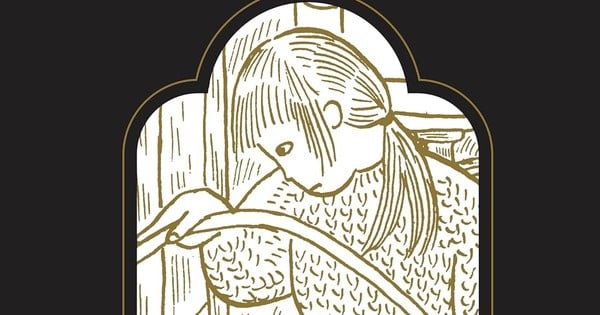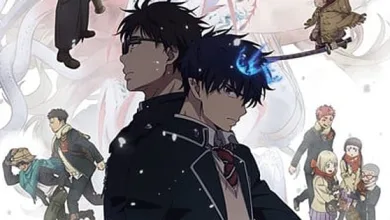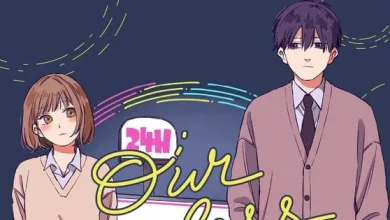My Picture Diary Manga Review – Review

At first blush, Maki Fujiwara‘s My Picture Diary does what it says on the tin. It tells the story of her daily life as a housewife and mother, spending time with her daily activities, noting the weather, and chronicling her activities with her toddler son Shosuke. Her husband, manga creator Yoshiharu Tsuge, is an almost peripheral character, spoken of as “Daddy” and given less space in Fujiwara’s narrative than you might expect. Fujiwara follows the conventions of the personal diary form from the mid-twentieth century – brief descriptions, weather notations, and a few personal feelings; if you’ve ever found a diary from that period, her formatting will be very familiar. It isn’t until you begin to think about her words and images that the cracks begin to show.
Even if you’ve never read Tsuge’s manga or heard of Maki Fujiwara – and you may not have; today, she’s probably best known for being Tsuge’s wife – the more you digest her story, the more you begin to notice what’s going on. On January 30th, she writes, “This is Daddy’s three-tatami-wide castle. I rarely dare trespass. Because Daddy works (?) from the time we go to bed until dawn, he doesn’t get up until midday.” At first, this looks like the life of a manga creator’s wife, but when we analyze the text more deeply, certain elements stand out. Her question mark after “works” indicates her doubts, but the sentence “I rarely dare trespass” is much more striking. Yes, everyone has private spaces within their home, and a shared bedroom would necessitate somewhere else for Tsuge and Fujiwara, but the way she frames it makes it sound like she’s afraid to go into his workspace. When she says in a later entry that he hits her several times, it feels like this entry was foreshadowing – she wasn’t afraid to enter because she didn’t want to disturb him but because she knew he could be violent.
Interestingly enough, only Tsuge has his own personal space within what, from the illustrations, appears to be a tiny apartment. Shosuke, the couple’s son, refers to the kitchen as Fujiwara’s room. Her place is behind the pots and pans, beside the stove, and even if she’s pursuing a creative endeavor, she’s still a housewife first and foremost. This is borne out by the various ways that Fujiwara describes her days: she’s happiest when she can take a long walk with Shosuke, preferably to a friend’s house, and when she can go out by herself, there’s a tone of panicked relief to her writing. But she also mentions that her husband doesn’t like her going out for a jog as often as she does, and their only truly positive interactions are when they sit down to watch movies together – but at home, on their TV, not in the theater, unless Fujiwara has permission to go out by herself. This is even more damning when we consider that before marrying Tsuge (or rather, becoming involved with him), Fujiwara was an actress in what today we’d call indie films and theater. Tsuge can be read as trying to change who she is from the ground up.
These readings are largely made possible by Ryan Holmberg‘s excellent essay in the back of the volume. Drawn & Quarterly is particularly good at publishing thoughtful, intense academic essays with their manga, and this is an especially good one. Holmberg notes that Tsuge’s depictions of women in his manga are very rarely flattering and often incorporate a sexualized exoticization and violence against them. He also points out that we know more about Fujiwara from his words than her own, making a case for this being an important work. It doesn’t paint Tsuge, a lionized figure in the manga sphere, in a flattering light at all. At best, he comes across as a lacking husband who puts everything on his wife; at worst, he’s an abuser. This all comes with the caveat that at the period Fujiwara wrote this book, Tsuge was struggling with anxiety and depression, to the point where, several times, Fujiwara accompanied him to the psychiatric ward of a hospital. That does not excuse him from hitting his wife, however, or the other aggressions he enacts towards her.
My Picture Diary isn’t a manga, at least not in the traditional sense. It’s more of a picture book for an adult audience, with each entry comprised of a text entry and a full-page illustration facing it. The edition I read is what we used to call “flopped;” it reads in the same direction as an English book. I mention this because, on Amazon, the sample text is in Japanese order, so I’m not entirely sure if there was a last-minute change or multiple editions. It doesn’t matter; the Japanese text in the images isn’t reversed, and the power of the combination of text and image remains unchanged no matter which side they’re on. Fujiwara’s art is detailed, showing a home that feels lived in and cluttered with mid-century bric-a-brac, while the outside has the vaguely rundown look of the late Showa period. Fujiwara draws herself alternatively with light and dark, long and short hair, and she often looks down at the heels, as if she’s trying, but struggling nonetheless. She’s almost always drawn with a cigarette in either her mouth or her hand, which may be shocking to younger readers, especially in one picture where her four-year-old son and his friend are playing house, a cigarette in each of their mouths, clearly mimicking the adults around them.
The easiest way to quantify this book is to say that it changes the more you think about it. Fujiwara’s deceptively light tone hides a deep pain underneath, and her images show the occasional bleakness of a life where “her room” is the kitchen. It’s not hard to see why this was nominated for an Eisner award, and to fully understand why, my best suggestion is to find a copy and read it.
Source link
#Picture #Diary #Manga #Review #Review



